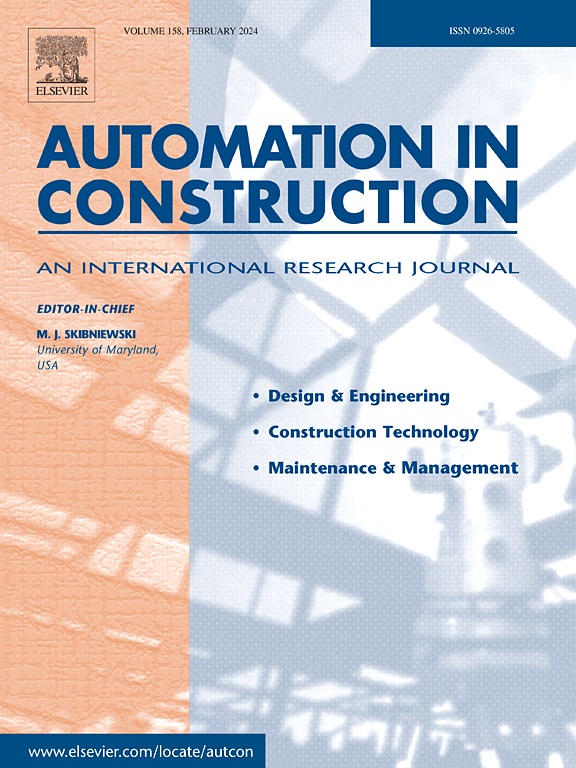Automated generation of assembly-oriented template models for digital twin implementation in DfMA construction
IF 9.6
1区 工程技术
Q1 CONSTRUCTION & BUILDING TECHNOLOGY
引用次数: 0
Abstract
Assembly analysis during the Being-Built (BB) stage of Design for Manufacturing and Assembly (DfMA) construction is hindered by inefficient digital modeling of assembly information. This paper studies the modeling approaches of DfMA assembly features to enable efficient digital twins. Hence, an automated generation framework for assembly-oriented template models is proposed. This framework features lightweight geometry and assembly features, dual As-Designed (AD) and BB templates for real-time synchronization, hierarchical topological networks for capturing multi-level assembly relationships, and quantitative quality metrics for alignment and connectivity. Testbed demonstrations and simulations validate the framework, achieving 87.3 % model size reduction, 95.1 % faster loading time, 93.8 % geometric complexity deduction, and a decrease in quality calculation complexity from to . These advancements demonstrate that the framework enables real-time cyber-physical synchronization, constraint-aware evaluation, and proactive quality control during dynamic assembly. Future work includes integration with closed-loop control systems and automated assembly equipment to enhance construction automation.
面向装配的模板模型的自动生成,用于DfMA构建中的数字孪生实现
装配信息的数字化建模效率低下,阻碍了面向制造与装配设计(DfMA)构建的在成品(BB)阶段的装配分析。本文研究了DfMA装配特征的建模方法,以实现高效的数字孪生。在此基础上,提出了面向装配的模板模型自动生成框架。该框架具有轻量级的几何结构和装配特性,用于实时同步的双as - design (AD)和BB模板,用于捕获多层次装配关系的分层拓扑网络,以及用于校准和连接的定量质量指标。试验台演示和仿真验证了该框架,实现了模型尺寸减小87.3%,加载时间加快95.1%,几何复杂度降低93.8%,从On2到On的质量计算复杂度降低。这些进步表明,该框架能够实现动态装配过程中的实时网络物理同步、约束感知评估和主动质量控制。未来的工作包括与闭环控制系统和自动化装配设备的集成,以提高施工自动化。
本文章由计算机程序翻译,如有差异,请以英文原文为准。
求助全文
约1分钟内获得全文
求助全文
来源期刊

Automation in Construction
工程技术-工程:土木
CiteScore
19.20
自引率
16.50%
发文量
563
审稿时长
8.5 months
期刊介绍:
Automation in Construction is an international journal that focuses on publishing original research papers related to the use of Information Technologies in various aspects of the construction industry. The journal covers topics such as design, engineering, construction technologies, and the maintenance and management of constructed facilities.
The scope of Automation in Construction is extensive and covers all stages of the construction life cycle. This includes initial planning and design, construction of the facility, operation and maintenance, as well as the eventual dismantling and recycling of buildings and engineering structures.
 求助内容:
求助内容: 应助结果提醒方式:
应助结果提醒方式:


